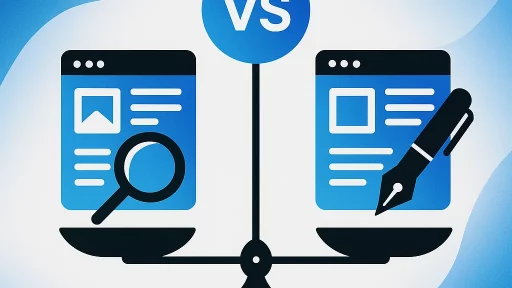Social media scheduling tools transform scattered posting into a predictable content publishing system. These platforms connect your accounts across Facebook, Instagram, LinkedIn, Twitter, TikTok, and other networks, allowing you to plan posts weeks ahead and publish them automatically.
Marketing teams using social media schedulers save hours each week whilst maintaining consistent brand presence. The tools handle timing, multi-platform coordination, and content organisation through visual calendars.
This guide walks through selecting the right social media scheduling tool, setting up effective workflows, and measuring results. You’ll learn how to structure content calendars, automate publishing across platforms, and collaborate with team members through approval workflows.
What Is a Social Media Scheduler?
A social media scheduler is software that lets you create, organise, and automatically publish content across multiple social networks from one dashboard. These tools replace manual posting with scheduled workflows.
The core function centres on content calendar management. You map out posts visually, assign them to specific platforms, and set publication times. The scheduler then publishes content automatically when scheduled.
Most social media scheduling tools support the major platforms. SocialBee supports multiple platforms including Facebook, Instagram, Twitter, LinkedIn, Pinterest, TikTok, YouTube, and Google Business Profile. Some platforms extend even further: Metricool supports a broader range of platforms, including Twitch.
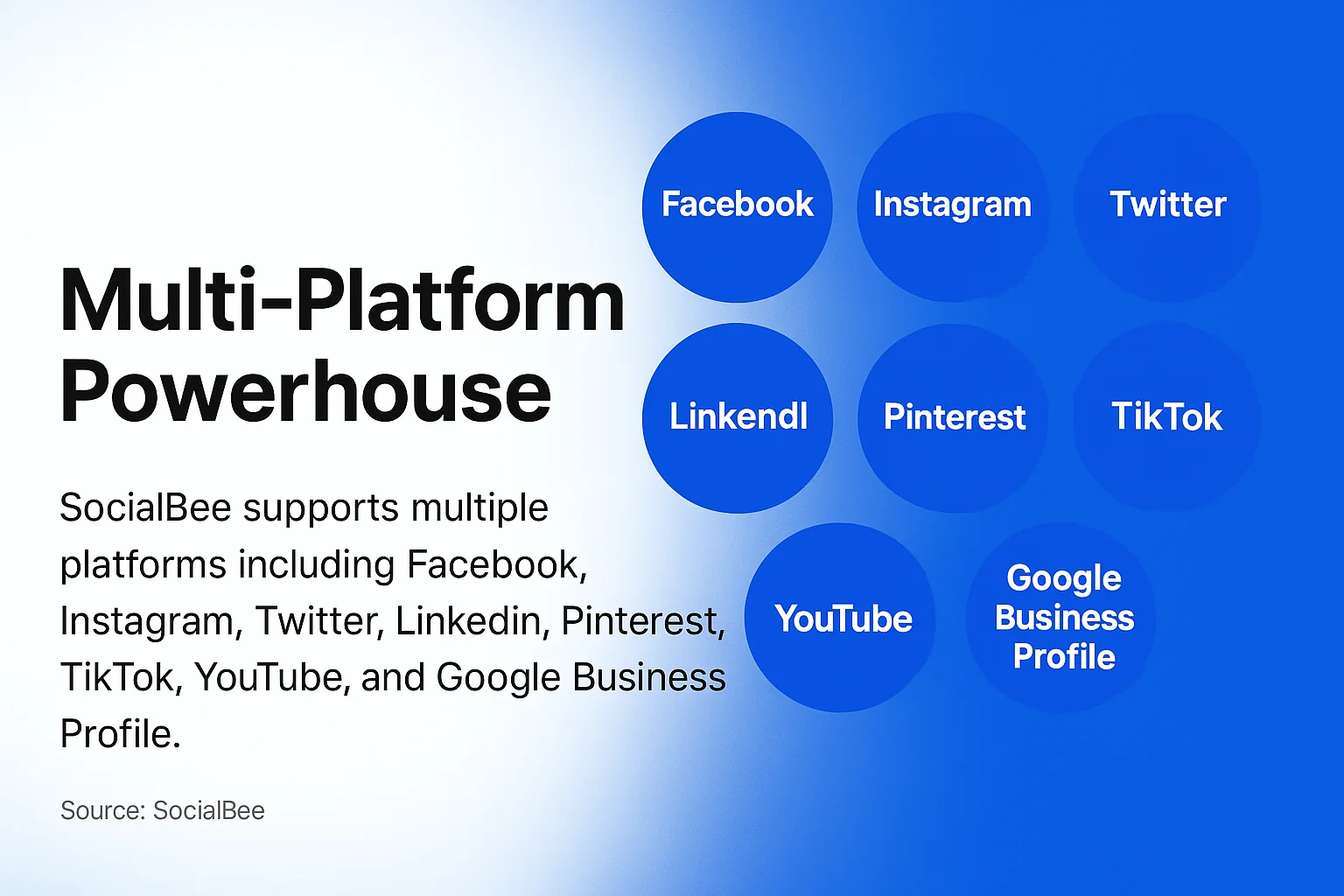
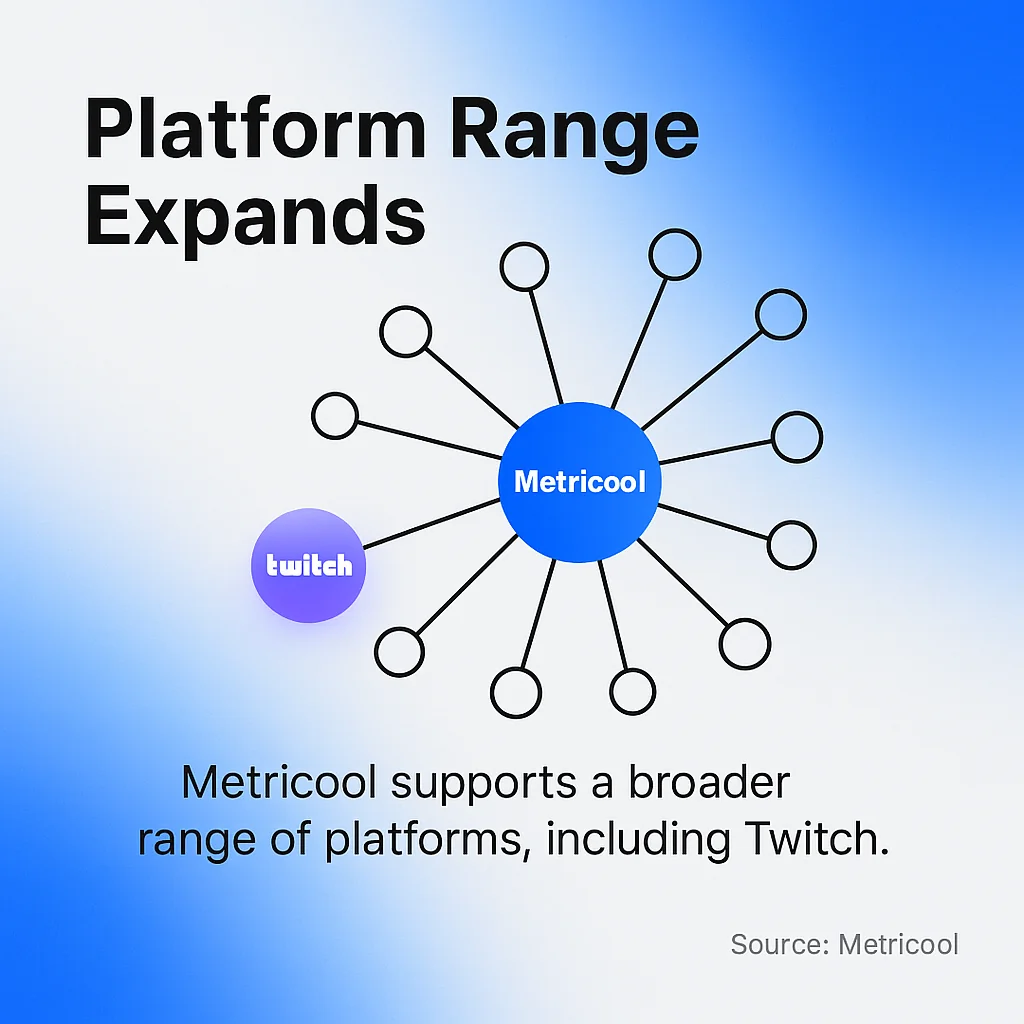
Beyond basic scheduling, these tools include analytics dashboards, content libraries, team collaboration features, and AI-powered caption generators. The combination streamlines social media management into a repeatable workflow.
Key Components of Social Media Schedulers
Content calendars provide the visual planning interface. You see all scheduled posts in weekly or monthly views, making it simple to spot gaps or overcrowding.
Publishing engines handle the technical work of posting to different platforms. Auto-publish features send content live without manual intervention, whilst some platforms require manual approval for certain post types.
Media libraries store images, videos, and graphics for reuse across campaigns. This centralised asset management speeds up content creation.
Analytics modules track performance metrics. You monitor reach, engagement, clicks, and conversions across all connected accounts from unified dashboards.
Why Workflows Matter for Social Media Management
Structured workflows prevent the chaos that comes from managing multiple social media accounts manually. Without clear processes, teams miss posting times, duplicate efforts, and lose track of content performance.
Automated posting reduces manual effort significantly. Schedule a month’s worth of content in one sitting, then let the scheduler handle publication whilst you focus on engagement and strategy.
Consistency builds audience trust. Regular posting schedules train followers to expect your content, improving reach through platform algorithms that reward consistent publishers.
Selecting the Right Social Media Scheduling Tool
Start by mapping your platform requirements. List every social network where you maintain an active presence, then check which schedulers support those platforms natively.
Platform compatibility matters more than feature lists. Tools with incomplete integrations create workflow gaps that force you back to manual posting.
Evaluating Multi-Platform Support
Most schedulers handle Facebook, Instagram, Twitter, and LinkedIn well. TikTok and Pinterest support varies more widely between tools.
Check whether the scheduler supports all post types for each platform. Some tools can schedule Instagram feed posts but not Stories or Reels. Others handle LinkedIn articles but not document posts.
Video content requires special attention. Verify the scheduler can handle video uploads for TikTok, Instagram Reels, YouTube Shorts, and other video-first platforms you use.
Assessing Content Planning Features
Visual content calendars separate good schedulers from basic ones. Look for drag-and-drop interfaces that let you reorganise posts quickly.
Bulk scheduling capabilities save substantial time. Upload multiple posts via CSV files or connect RSS feeds for automated content queuing.
Content categorisation helps maintain posting variety. Tools like SocialBee let you create content categories that rotate automatically, ensuring balanced content mixes.
Reviewing Analytics and Reporting Capabilities
Analytics integration determines how effectively you can measure social media performance. Look for tools that pull native platform analytics into unified dashboards.
Standard metrics include reach, impressions, engagement rate, clicks, and follower growth. Advanced tools add sentiment analysis, competitor benchmarking, and custom report builders.
Automated reporting saves hours each month. Schedule weekly or monthly performance reports to deliver automatically to stakeholders.
Considering Team Collaboration Tools
Multi-user access becomes essential as teams grow. Evaluate how each scheduler handles user permissions and role assignments.
Approval workflows prevent unauthorised posts from going live. Marketing managers can review and approve content before publication, maintaining brand consistency.
Comment assignment features route social media conversations to appropriate team members. Customer service questions go to support staff, whilst sales enquiries reach the sales team.
Setting Up Your Social Media Scheduling Workflow
Effective workflows begin with clear content planning systems. Map out your posting frequency, content themes, and platform priorities before connecting accounts.
Start with a content strategy document. Define posting goals for each platform, typical post formats, and success metrics. This foundation guides all scheduling decisions.
Connecting Social Media Accounts
Link each social media profile to your scheduler through official platform integrations. Most schedulers use OAuth authentication, which grants posting permissions without sharing passwords.
Verify connection strength after setup. Some platforms require periodic reauthentication, particularly Facebook and Instagram business accounts.
Test posting capabilities for each connected account. Schedule a test post to confirm the scheduler can publish successfully before building your content calendar.
Organising Your Content Calendar
Block out regular posting slots based on audience activity patterns. Check your platform analytics to identify when followers are most active online.
Create content themes for different days or weeks. Motivation Mondays, Tutorial Thursdays, and Behind-the-Scenes Fridays provide structure that audiences recognise.
Balance promotional content with educational and entertaining posts. The 80/20 rule works well: 80% valuable content, 20% promotional messages.
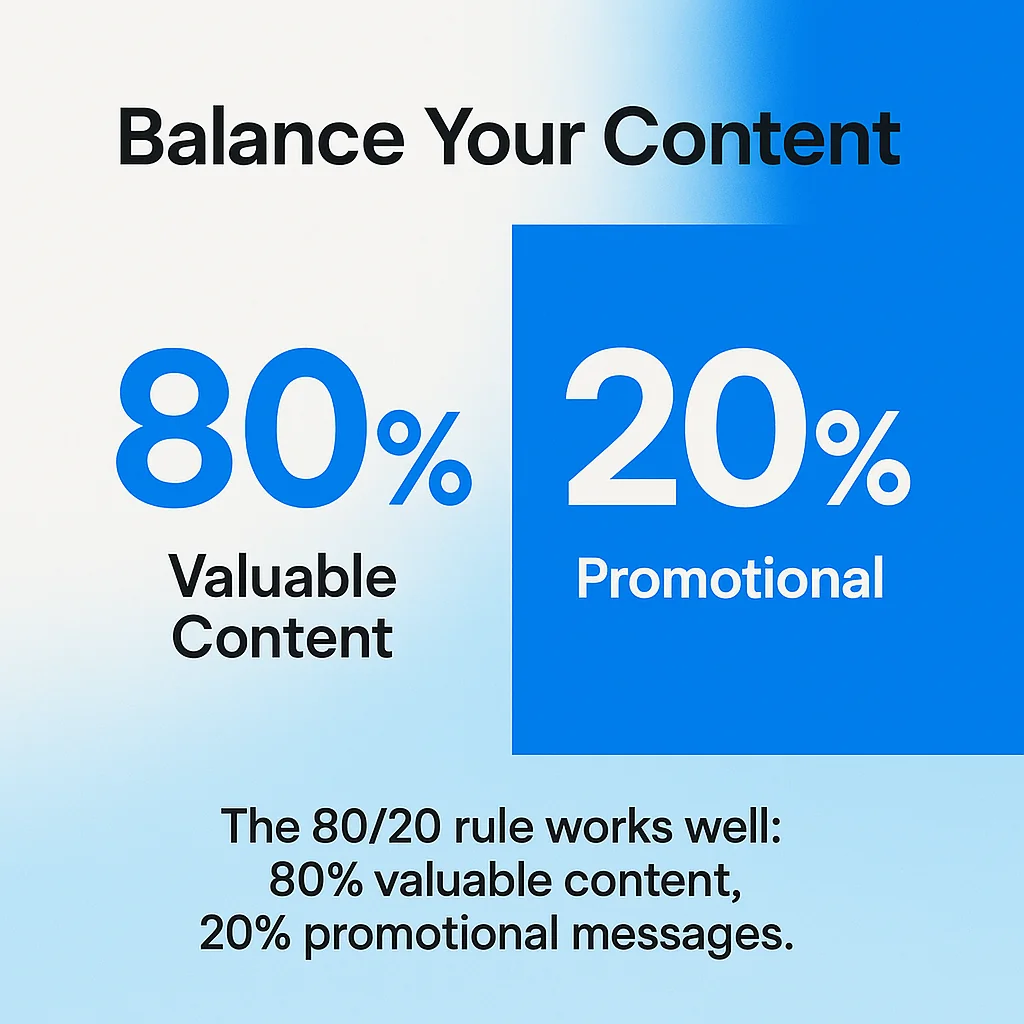
Building Content Templates
Standardised templates speed up content creation whilst maintaining consistency. Design templates for common post types like product launches, blog promotions, and user testimonials.
Include placeholders for variable elements. Caption templates might have [PRODUCT_NAME], [BENEFIT], and [CALL_TO_ACTION] slots you fill for each specific post.
Store templates within your scheduler’s media library or content management system. Quick access reduces friction when creating new posts.
Scheduling Posts Strategically
Distribute posts throughout the day to maximise visibility. Morning posts catch early scrollers, midday content reaches lunch browsers, and evening posts engage after-work audiences.
Space posts appropriately for each platform. LinkedIn tolerates one post daily, whilst Twitter audiences expect multiple updates throughout the day.
Leave buffer time between similar content types. Don’t schedule three promotional posts back-to-back, even across different platforms.
Leveraging AI and Automation Features
Modern social media schedulers incorporate AI tools that accelerate content creation. These features range from caption generators to image creators and optimal timing recommendations.
AI-powered features work best as starting points rather than final solutions. Use them to overcome creative blocks and speed initial drafts, then refine output to match your brand voice.
Using AI Caption Generators
AI caption writers analyse your image or topic, then generate relevant post copy. Tools like Buffer and Hootsuite include this functionality.
Feed the AI context about your brand, target audience, and desired tone. Better inputs produce more relevant captions that require less editing.
Review AI-generated captions for accuracy and brand alignment. These tools sometimes produce generic content that lacks personality or makes factual errors.
Implementing Optimal Posting Times
Many schedulers analyse your historical performance data to recommend best posting times. These suggestions identify when your specific audience engages most actively.
Test recommended times against your own observations. Algorithm-suggested times provide good starting points but may not account for recent audience behaviour shifts.
Adjust posting schedules seasonally. Audience activity patterns change during holidays, school terms, and major events.
Automating Content Recycling
Evergreen content deserves multiple appearances in your feed. Set up automation rules that republish top-performing posts on regular cycles.
Space recycled content appropriately. Wait at least 90 days before resharing the same post to avoid annoying regular followers.
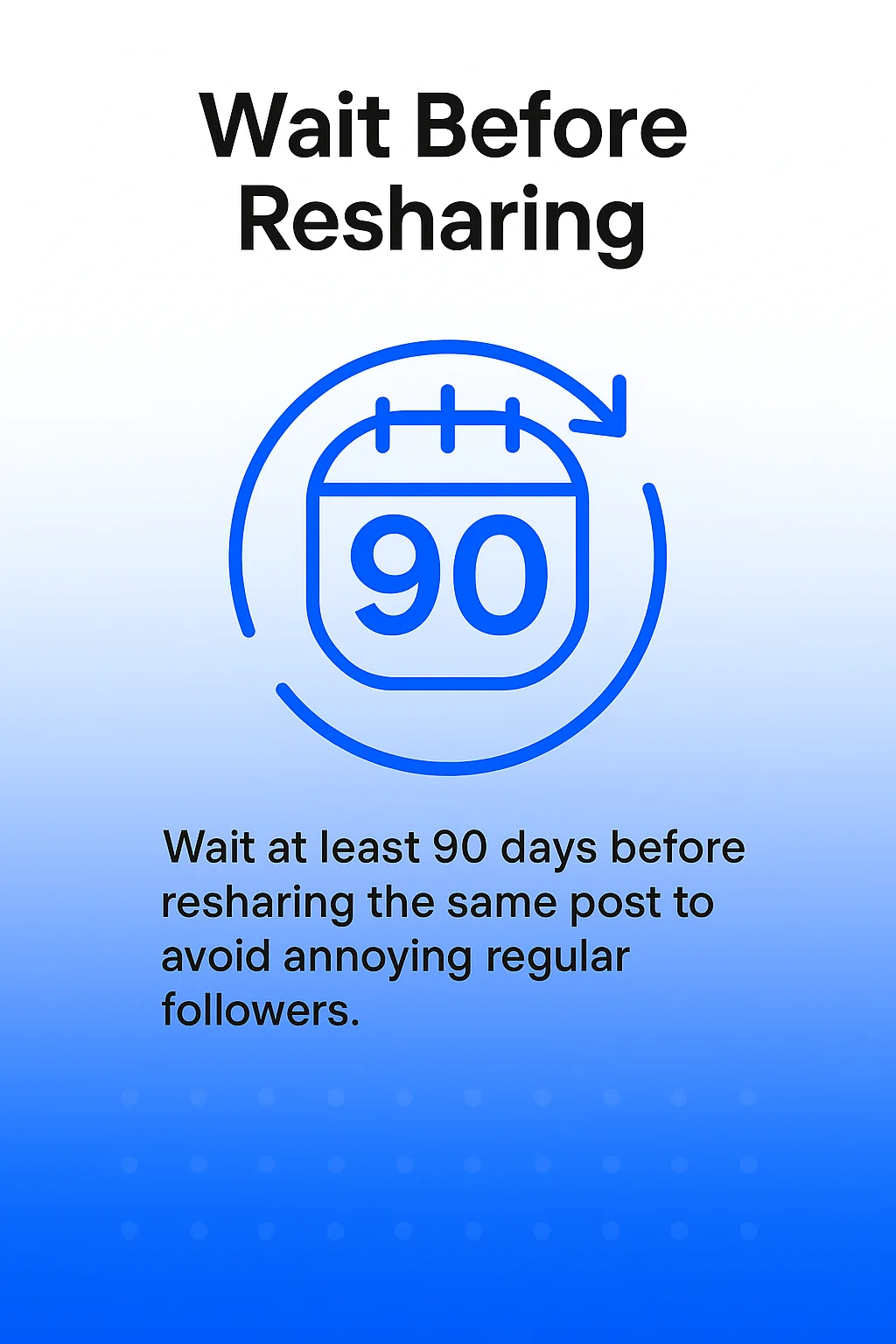
Update recycled content before republishing. Refresh statistics, check link validity, and revise outdated references.
Establishing Team Collaboration Processes
Multiple team members contributing to social media requires clear workflows and approval processes. Without structure, accounts become chaotic with conflicting messages and duplicated efforts.
Define roles before building collaboration workflows. Identify who creates content, who reviews it, who approves final posts, and who handles community engagement.
Setting Up User Permissions
Assign permissions based on responsibility levels. Content creators need drafting and scheduling access. Managers require approval authority. Community managers need engagement tools but not necessarily posting rights.
Restrict access to sensitive accounts. Financial services firms, healthcare organisations, and other regulated industries should limit who can publish to official company profiles.
Review permissions quarterly. Remove access for departed team members immediately and audit whether current permissions still match job responsibilities.
Implementing Approval Workflows
Approval workflows add review checkpoints before posts go live. Draft posts move through creator to reviewer to approver stages, with each person able to request changes.
Define approval requirements for different content types. Promotional posts might require legal review, whilst blog share posts need only manager approval.
Set approval deadlines to prevent bottlenecks. Require reviewers to approve or reject within 24 hours, automatically escalating to backup approvers if deadlines pass.
Managing Client Access for Agencies
Agencies managing multiple client accounts need clear separation between workspaces. Look for schedulers that organise accounts by client rather than mixing all profiles together.
Grant clients view-only access to their content calendars. They see planned posts and performance data without ability to modify or publish content.
Create client-specific reports that showcase results without exposing other clients’ data. Privacy protection builds trust and meets contractual obligations.
Tracking Performance Through Analytics
Scheduling posts represents only half the workflow. Analysing performance data completes the cycle, informing future content decisions.
Establish regular analytics review rhythms. Weekly quick checks identify immediate issues, whilst monthly deep dives reveal trends and opportunities.
Monitoring Key Performance Metrics
Track engagement rate across all platforms. This metric reveals how actively audiences interact with your content relative to reach.
Monitor follower growth trends. Steady increases indicate healthy account growth, whilst plateaus or declines signal content strategy problems.
Measure click-through rates on links. This metric shows how effectively posts drive traffic to your website or landing pages.
Identifying Top-Performing Content
Sort posts by engagement to find your winners. Look for patterns in topics, formats, and posting times amongst your best performers.
Compare performance across platforms. Content that works well on LinkedIn might flop on Instagram, revealing platform-specific audience preferences.
Note which calls-to-action generate responses. Learn whether your audience prefers direct asks, gentle suggestions, or question-based engagement prompts.
Adjusting Strategy Based on Data
Double down on content types that perform well. If tutorial videos consistently outperform text posts, shift more resources toward video production.
Reduce or eliminate low-performing content formats. Stop creating content that consistently underperforms unless it serves specific strategic purposes.
Test new approaches systematically. Try different posting times, caption styles, or visual formats for 30 days before evaluating results.
Optimising Workflows for Specific Platforms
Each social media platform has unique requirements, optimal posting patterns, and content preferences. Your scheduler workflow should accommodate these differences.
Platform-specific strategies prevent the one-size-fits-all approach that weakens social media presence. Content that works on Twitter often fails on LinkedIn without adaptation.
Instagram Scheduling Considerations
Instagram demands high-quality visual content. Ensure your scheduler supports high-resolution image uploads and maintains image quality through compression.
Schedule feed posts, Stories, and Reels separately. Each format serves different purposes and reaches audiences through distinct algorithms.
Use hashtag research tools integrated with your scheduler. Effective hashtag strategies dramatically increase post discoverability on Instagram.
Facebook Posting Strategies
Facebook rewards content that sparks conversation. Schedule posts that ask questions, request opinions, or invite sharing.
Vary content formats between text, images, videos, and links. Facebook’s algorithm promotes accounts that use diverse content types.
Monitor comment sections actively. Facebook prioritises posts that generate ongoing discussions, so responding to comments boosts reach.
LinkedIn Professional Content
LinkedIn audiences expect professional, educational content. Schedule thought leadership articles, industry insights, and career development tips.
Post during business hours when professionals browse LinkedIn. Early morning, lunch breaks, and end-of-day periods typically perform best.
Engage with other posts before sharing your own. LinkedIn’s algorithm rewards users who actively participate in the community through comments and shares.
TikTok and Short-Form Video
TikTok requires vertical video content optimised for mobile viewing. Verify your scheduler supports proper aspect ratios and video specifications.
Post frequently on TikTok. The platform’s algorithm favours accounts that publish multiple times daily.
Leverage trending sounds and challenges. TikTok’s discovery algorithm promotes content that participates in current trends.
Twitter Real-Time Engagement
Twitter moves faster than other platforms. Schedule multiple daily posts to maintain visibility in rapidly moving feeds.
Balance scheduled content with real-time responses. Twitter audiences value timely reactions to news and trending topics.
Use thread features for longer content. Twitter threads perform well algorithmically and let you explore topics in depth.
Managing Content Libraries and Assets
Centralised media management prevents the chaos of scattered files across team members’ computers. Organised content libraries speed up post creation and ensure brand consistency.
Build your library before scheduling content. Having approved assets ready reduces friction when creating posts on deadline.
Organising Visual Assets
Create folder structures that match your content categories. Separate product images, lifestyle photos, graphics, and video files into distinct collections.
Tag assets with descriptive keywords. Tags enable quick searches when you need specific images for scheduled posts.
Maintain multiple versions of key visuals. Store images in platform-specific aspect ratios so you can quickly grab the right size for each social network.
Storing Caption Templates
Build a library of proven caption formulas. Save templates for product launches, blog promotions, testimonials, and other regular post types.
Include hashtag sets with templates. Attach relevant, researched hashtags to each template so creators don’t start from scratch every time.
Update templates based on performance data. Refine caption structures that consistently generate high engagement.
Integrating Design Tools
Connect design platforms like Canva directly to your scheduler. This integration lets you create graphics and schedule posts without switching between tools.
Use consistent brand templates across all visual content. Unified colour schemes, fonts, and layouts strengthen brand recognition.
Create platform-specific design templates. Instagram carousels, Facebook cover images, and LinkedIn article headers each require different dimensions and layouts.
Handling Social Inbox and Community Management
Scheduling posts represents outbound communication. The social inbox manages inbound messages, comments, and mentions that require responses.
Unified inbox features aggregate conversations from all platforms into single dashboards. You see Facebook comments, Instagram DMs, and Twitter mentions without switching between tabs.
Setting Up Response Workflows
Route different message types to appropriate team members. Customer service questions go to support staff, sales enquiries reach the sales team, and partnership requests land with business development.
Establish response time standards. Aim to acknowledge all messages within four hours during business hours, even if full resolution takes longer.
Create saved replies for common questions. Template responses to frequently asked questions speed up reply times whilst maintaining consistency.
Managing Engagement at Scale
Tools like Sprout Social and Agorapulse provide dedicated social listening features. Monitor brand mentions, competitor activity, and industry conversations.
Set up keyword alerts for important terms. Get notifications when people discuss your products, competitors, or relevant industry topics.
Track sentiment trends over time. Notice whether conversations about your brand trend positive, negative, or neutral, then adjust strategies accordingly.
Scaling Your Scheduler Workflow
Growing teams and expanding platform presence require workflow evolution. Systems that worked for one person managing three accounts break down when five people manage fifteen accounts.
Regularly audit your workflows as you scale. Bottlenecks and inefficiencies become apparent when volume increases.
Adding New Team Members
Document your workflows before onboarding new team members. Written processes reduce training time and ensure consistency.
Create role-specific training materials. Content creators need different knowledge than community managers or analytics specialists.
Shadow experienced team members during onboarding. New hires learn workflow nuances that documentation might miss.
Expanding to New Platforms
Research platform-specific best practices before expanding. Each social network has distinct content preferences and audience expectations.
Start slowly on new platforms. Test content approaches for 60 days before committing to full publishing schedules.
Repurpose existing content for new platforms rather than creating everything from scratch. Adapt top-performing posts to new formats and platform requirements.
Managing Multiple Brands or Clients
Metricool is used by over a million brands, agencies, and marketing professionals, demonstrating the scale these tools can handle.

Separate workspaces prevent content mix-ups between brands. Look for schedulers that offer complete workspace isolation rather than simple account tagging.
Standardise workflows across all brands whilst allowing customisation. Core approval processes should remain consistent even when content strategies differ.
Evaluating and Refining Your Workflow
Effective workflows evolve based on results and team feedback. Schedule quarterly reviews to assess what works and what needs improvement.
Measure workflow efficiency alongside content performance. Fast, smooth processes enable better content creation than clunky systems that frustrate teams.
Identifying Workflow Bottlenecks
Track how long content spends at each workflow stage. Long delays during approval stages indicate either unclear requirements or insufficient reviewer capacity.
Survey team members about friction points. People doing the work often spot inefficiencies that managers miss.
Monitor missed posting deadlines. Frequent scheduling failures signal workflow problems that need addressing.
Testing Workflow Improvements
Change one variable at a time when refining workflows. Multiple simultaneous changes make it impossible to identify what actually improved results.
Run improvement tests for at least 30 days. Short tests don’t account for weekly cycles or temporary anomalies.
Document what works and what doesn’t. Build institutional knowledge that survives team turnover.
Staying Current With Platform Changes
Social media platforms constantly update features, algorithms, and best practices. Subscribe to official platform blogs and follow scheduler tool updates.
Test new features early. Early adopters often gain algorithmic advantages as platforms promote new capabilities.
Adjust workflows when platforms change posting requirements or introduce new content formats.
Building Your Social Media Scheduler Foundation
Effective social media scheduling workflows combine the right tools with clear processes and consistent execution. Start by selecting a scheduler that supports all your platforms and fits your team size.
Focus on these immediate next steps. Connect your social media accounts to your chosen scheduler today. Build a basic content calendar for the next two weeks, including varied content types across your platforms.
Set up approval workflows if you work with teams. Define who creates, reviews, and approves content before it goes live.
Your workflow will improve through regular refinement. Monitor performance data, identify successful patterns, and adjust your processes accordingly. The schedulers handle posting logistics whilst you focus on strategy and creativity.
{
“@context”: “https://schema.org”,
“@type”: “BlogPosting”,
“headline”: “Building a social media scheduler workflow”,
“description”: “Building a social media scheduler workflow”,
“datePublished”: “2025-11-11”,
“dateModified”: “2025-11-11”,
“author”: {
“@type”: “Organization”,
“name”: “Quuu”
},
“publisher”: {
“@type”: “Organization”,
“name”: “Quuu”
},
“image”: “https://storage.googleapis.com/bloggenimages/openai-statistic-metricool-is-used-by-over-a-million-brands-agencie-1762894347138.webp”
}
{
“@context”: “https://schema.org”,
“@type”: “BreadcrumbList”,
“@id”: “#breadcrumbs”,
“itemListElement”: [
{
“@type”: “ListItem”,
“position”: 1,
“name”: “Home”,
“item”: “https://blog.quuu.co”
},
{
“@type”: “ListItem”,
“position”: 2,
“name”: “Blog”,
“item”: “https://blog.quuu.co/blog”
},
{
“@type”: “ListItem”,
“position”: 3,
“name”: “Building a social media scheduler workflow”
}
]
}


